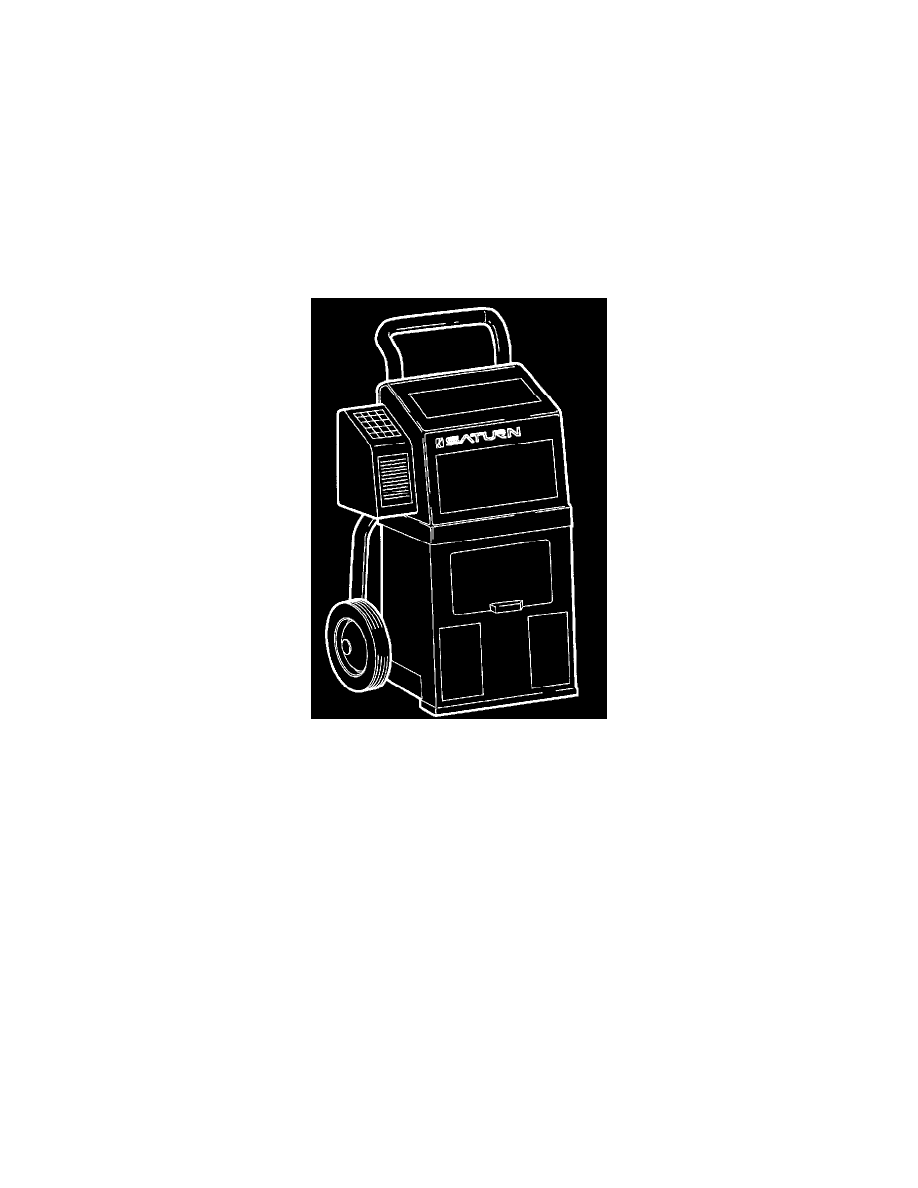LW2 V6-3.0L VIN R (2000)

Refrigerant: Service and Repair
General Description
CAUTION: NEVER CHARGE THE A/C SYSTEM THROUGH THE HIGH PRESSURE SIDE OF THE SYSTEM. COMPONENT
DAMAGE AND PERSONAL INJURY COULD RESULT.
NOTE: Under no circumstances should alcohol be used in the system in an attempt to remove moisture. Damage to the system components
could occur.
If the system has been opened for any repair, or the R-134a charge lost, the system must be evacuated prior to charging.
Evacuation and charging is a combined procedure and all gauge lines must be purged with R-134a prior to charging.
A/C System R-134A Recovery
^
Before removing or replacing any of the A/C refrigerant lines or components, the refrigerant must be completely recovered.
NOTE: Verifying the purity of the refrigerant with a refrigerant purity identifier before recovery is recommended.
^
The refrigerant system must be discharged using an air conditioning refrigerant recovery and recycling system. Follow the manufacturers operating
instruction for system being used.
NOTE: The air conditioning refrigerant and recycling station must meet UL standards for moisture and contamination removal. Recovery
systems which cannot meet these standards are not approved for warranty repairs. Reuse of moisture or particulate contaminated
refrigerant will result in premature compressor and other component failure.
^
Always check the A/C system for pressure with a manifold gauge set to determine if refrigerant is present in the system. Performing recovery on an
A/C system which is open to atmosphere as a result of a leak, would allow the recovery station to pull only air into the tank.
NOTE: Failure to check for residual oil from the previous recovery can result in adding extra oil to the vehicle currently being serviced. This
will also result in insufficient oil in the system previously worked on and could possible contribute to premature compressor failure.
Evacuating the A/C System
